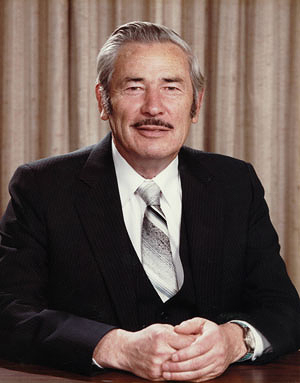
They prayed for adequate support for education. They prayed for the immigrants and strangers among us. They prayed for the quality of life in our community and for strong families.
And they prayed for Pat J. Baca who died a few weeks ago, one of the area’s true public servants.
As if there was no alternative, Pat dove into public service—as a teacher, a principal, a councilor, candidate and commissioner. His acts touched thousands who walk our trails in the Elena Gallegos, who look at exhibits in the Albuquerque Museum, who cross the river at Montano and Paseo del Norte, or who still have their first book, given to them by their teacher or principal, Pat Baca.
Those present, including a generous smattering of former city hall regulars, themselves a graying lot, prayed mostly that we could sustain the sense of community that the politicians of Pat’s generation set up for us in this once small Western city. City government used to be more of a non-partisan affair —set up that way in 1974 when the charter changed it to a council-mayor format. Although they had their differences, Republicans and Democrats alike wanted to create a great city, drawing on the area’s diverse population, culture and beautiful surroundings. They voted for a quality of life tax used to preserve open space, create one of the nation’s best system of urban parks, and to build a world class art museum. They worked with the state to locate a natural history museum here instead of in another town. A mostly Hispanic fire department and Anglo police department were desegregated. Harry Kinney, mayor multiple times, responded to Democrats and Republicans alike. Nadine Bicknell, Pauline Gubbels, Fran Hill, Alan Reed, Tom Hoover, Marion Cottrell, Bob White and others joined forces -- although they disagreed on the details.
Was it a quieter time? I doubt it. But what I do know is that public cynicism, and high cost, independently financed negative campaigns were not the norm. Candidates for council were limited to the salary of the office, about $7,000 and the mayor was limited to his salary level. Somehow, those who ran for office were not in it for the big bucks, to make a splash, or continue up the ladder, although many tried. Theirs was a life composed of endless stacks of reports, committee hearings, coffee-and-cake reception lines, and ribbon cuttings in the rain.
It was not unusual for a Republican to be a prominent figure in a Democratic campaign. Carol Kinney, the former Republican mayor’s wife, worked for Pat Baca. So did Lindy Gold. And Democrats worked for Republicans in both city jobs and on the campaign trail, as well.
Maybe it was because Pat had such a large family, with almost dozen brothers and sisters, and then had eight children himself. It must have seemed like his extended family actually was the community, especially when Albuquerque was a smaller place. And those children, like those of the burgeoning middle class during the 60s and 70s, needed educating. It was the acknowledged path upward and outward.
The Bacas were prominent in the South Valley as farmers, as pillars of the Catholic Church and later as processors and purveyors of New Mexico’s signature item—chile. In that atmosphere, a solitary lifestyle, circumscribed by one’s nuclear family, one’s own business and personal interests was unthinkable. Doing well– didn’t just mean prospering. It meant helping other people, raising the standard for everyone, pushing for public services, showing compassion and yes, just plain doing “good” like Pat’s brother Father Paul preached.
Public service isn’t dead today, but it’s mutated into something different. You wouldn’t know it from the voting stats or public opinion polls, which hold politicians in universally high disregard. Ask the ordinary citizen if he or she would ever run for office, and you’ll get a guffaw. “Oh come on, how do you expect to get anything done with those clowns,” someone once asked me. Others thanked me profusely for my own service in the legislature, but always added “– better you than me, I don’t know how you have the patience.”
But citizen activism, volunteerism is alive in unexpected ways, and that has given me some hope. We are not bowling alone, as one author put it. Groups are willing to go to the mat for mistreated animals, to raise money for the victims of sexual assault or for the prevention of global warming. Young people are organizing through social media and, with those damnable emails we all get, are making a difference—thwarting a corporate takeover of the internet, raising money for local entrepreneurs, supporting one another in a tough economy. These efforts may look small but they are the seeds of a renewed civic ethic.



Responses to “Remembering Pat Baca – and Albuquerque Past”